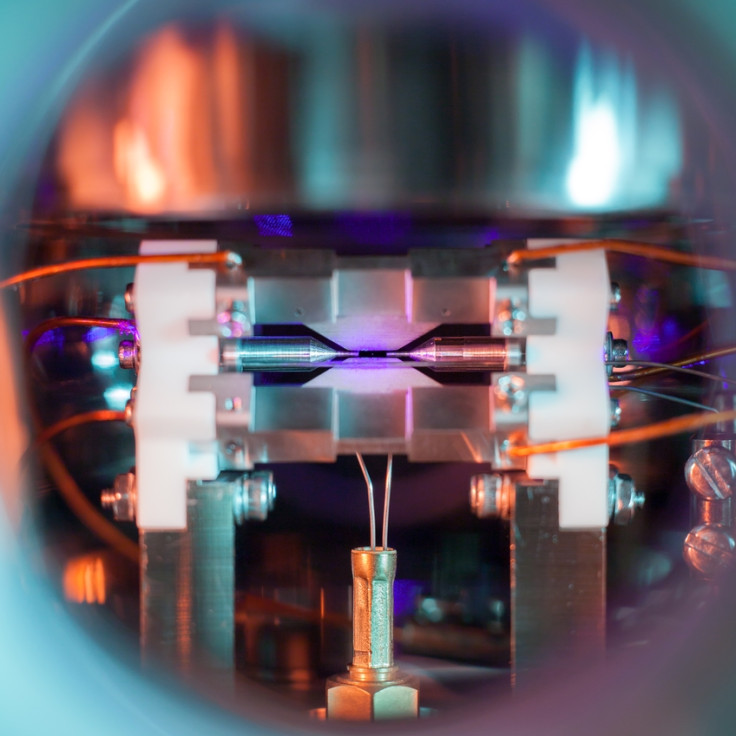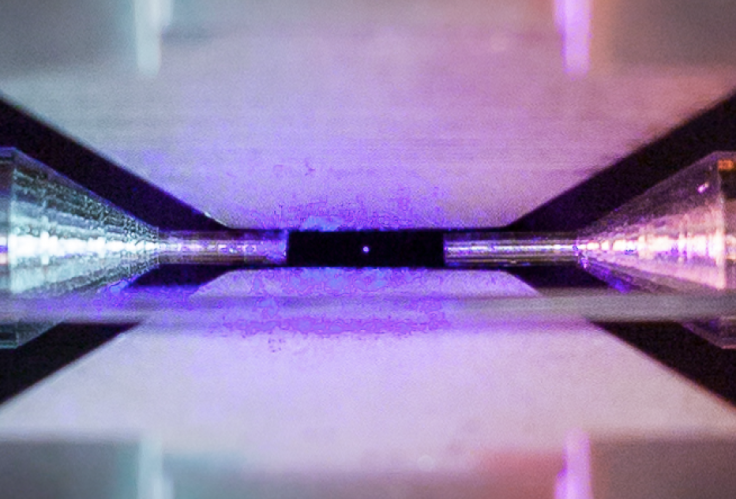This extraordinary photo shows a single atom captured using an ordinary camera
David Nadlinger's 'Single Atom In An Ion Trap' won first prize in EPSRC competition.

An Oxford University student has captured an extraordinary image of a single, floating atom, using an ordinary DSLR camera.
To take the photo, David Nadlinger, a quantum physics PhD candidate, suspended a single strontium atom in the air between two metal electrodes – just two millimetres apart - and illuminated it with lasers. The atom, which is held in place by a strong magnetic field, is visible to the camera as a tiny purple-blue dot.
The image – named 'Single Atom In An Ion Trap' - won first prize at a science photography competition conducted by the Engineering and Physical Sciences Research Council (EPSRC).
In atomic terms, strontium atoms are fairly large -measuring around 215 billionths of a millimetre across - but this is still infinitesimally small. So, how is it possible to see the atom with the naked eye in this image?
"When illuminated by a laser of the right blue-violet colour, the atom absorbs and re-emits light particles sufficiently quickly for an ordinary camera to capture it in a long exposure photograph," according to the EPSRC.
In other words, we are not seeing the true outline of the atom, but rather the laser light that it is reflecting.
Explaining how he came up with the idea for the photo Nadlinger said: "The idea of being able to see a single atom with the naked eye had struck me as a wonderfully direct and visceral bridge between the miniscule quantum world and our macroscopic reality."

"A back-of-the-envelope calculation showed the numbers to be on my side, and when I set off to the lab with camera and tripods one quiet Sunday afternoon, I was rewarded with this particular picture of a small, pale blue dot."
In terms of camera equipment, Nadlinger's setup was fairly ordinary apart from his use of extension tubes – an accessory which increases the focal length of a lens that is useful for extreme close-up photography.





















